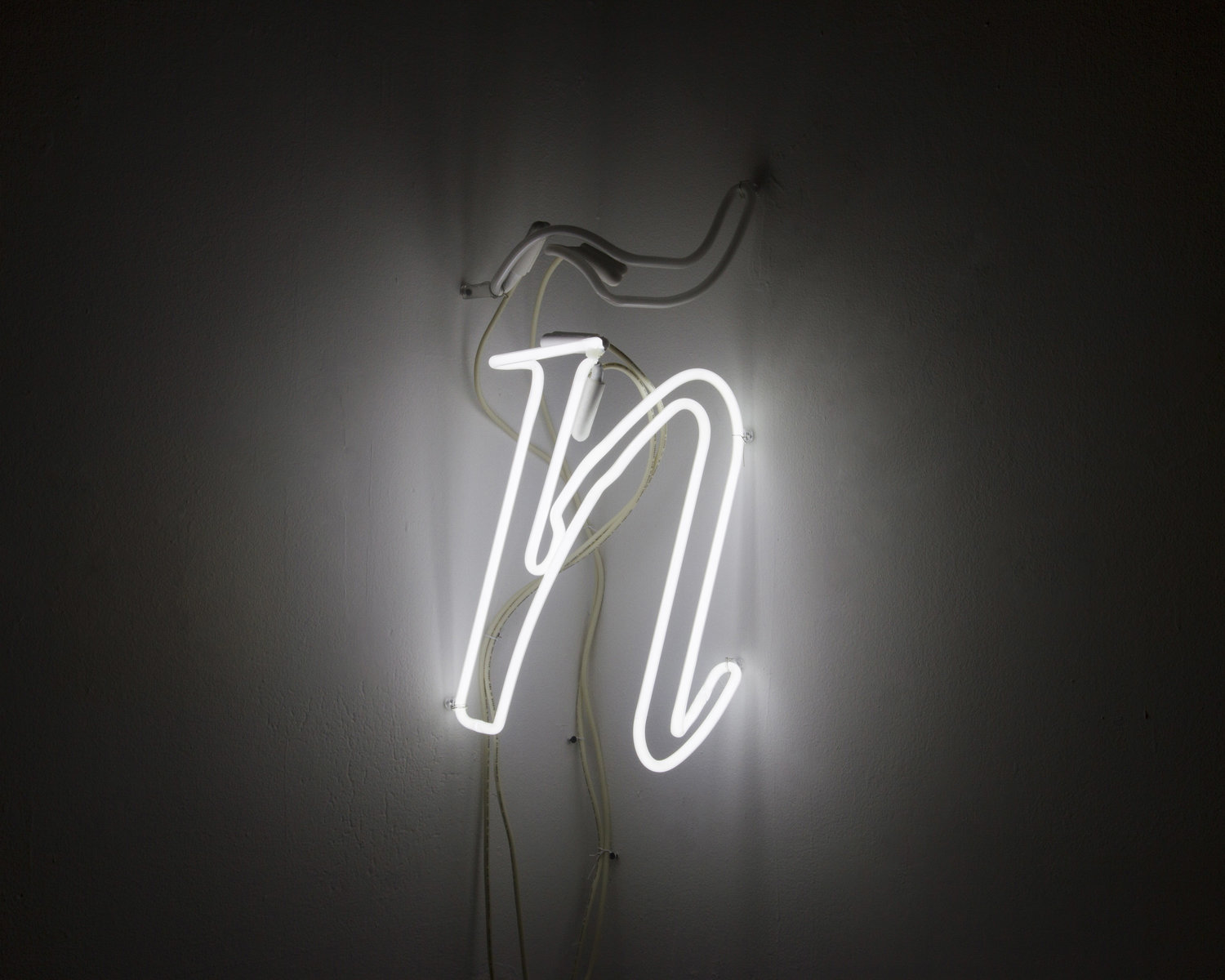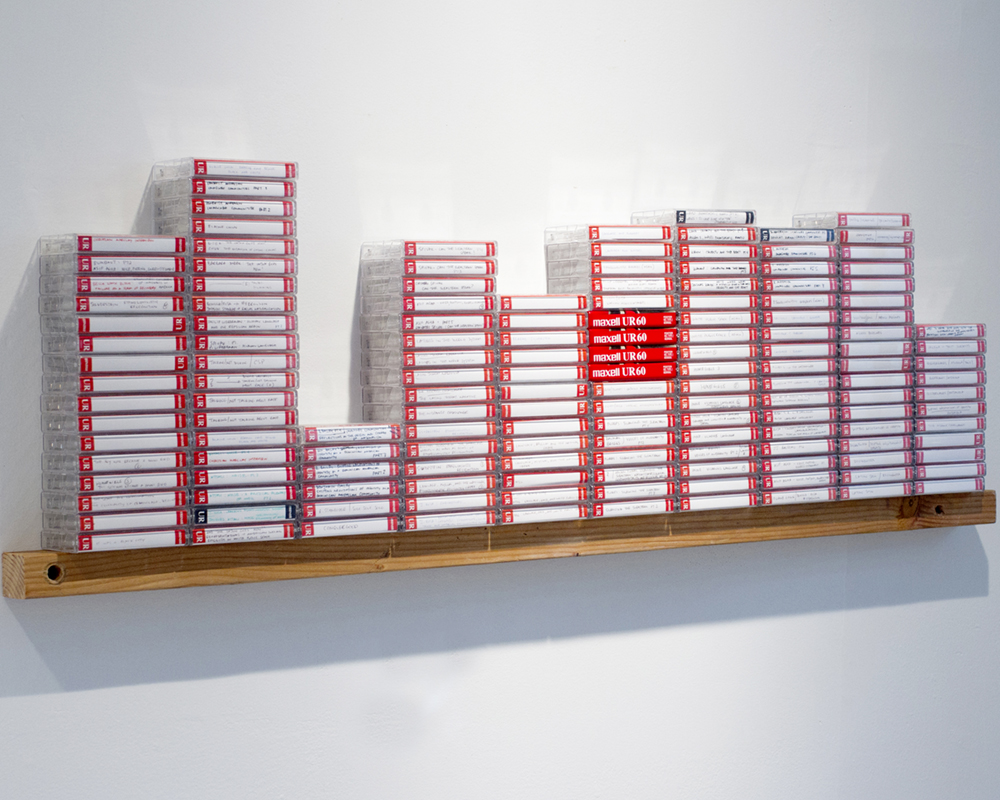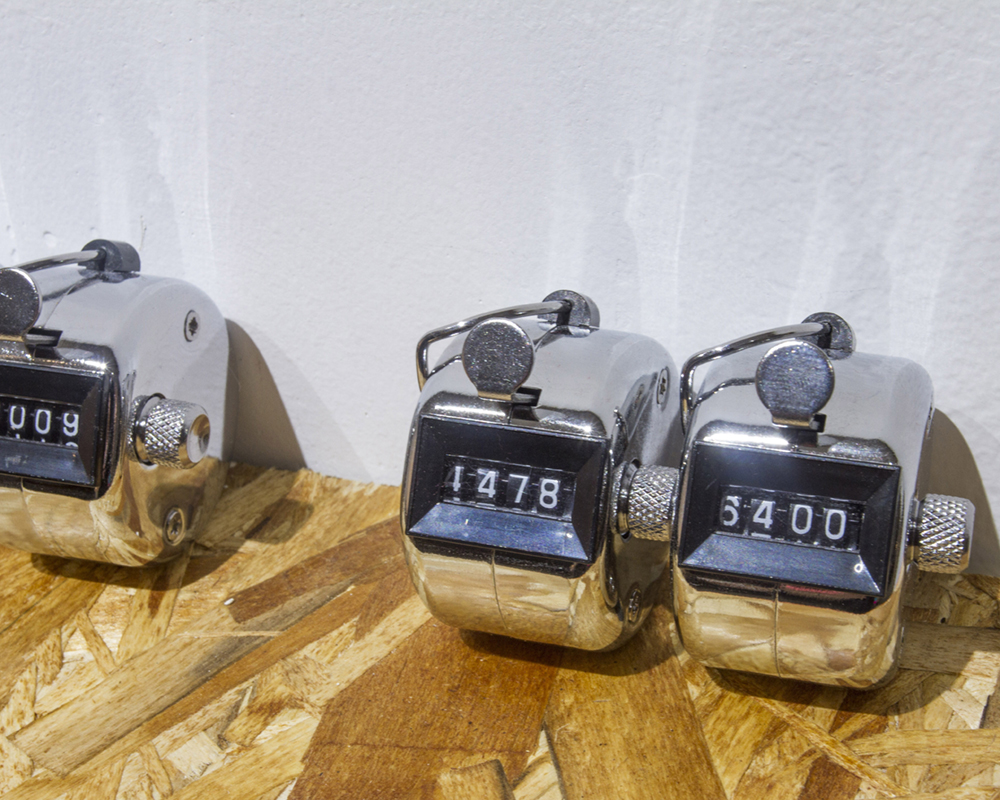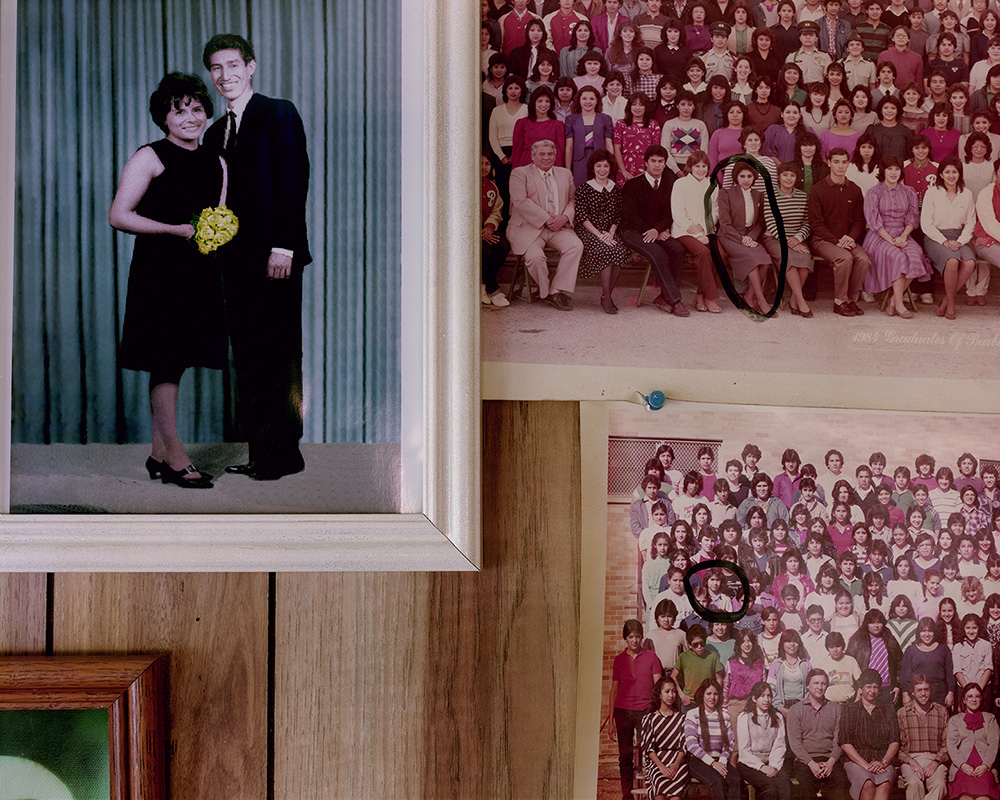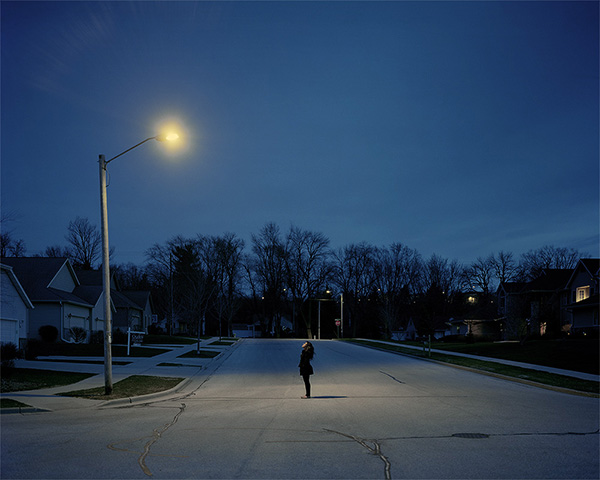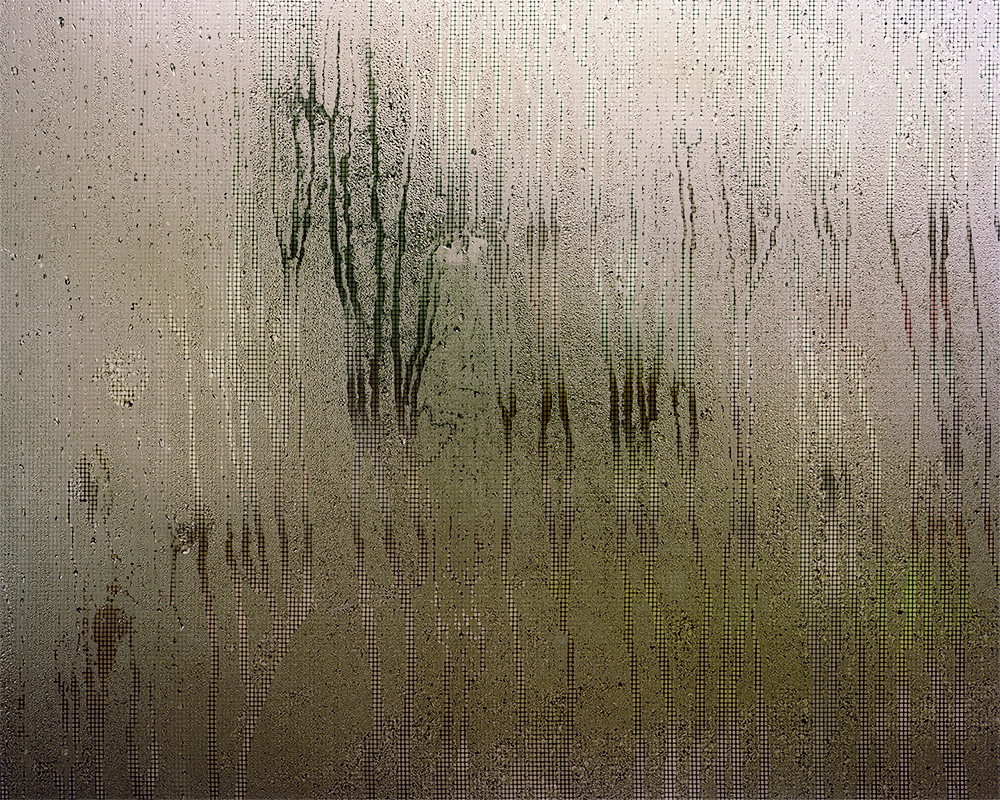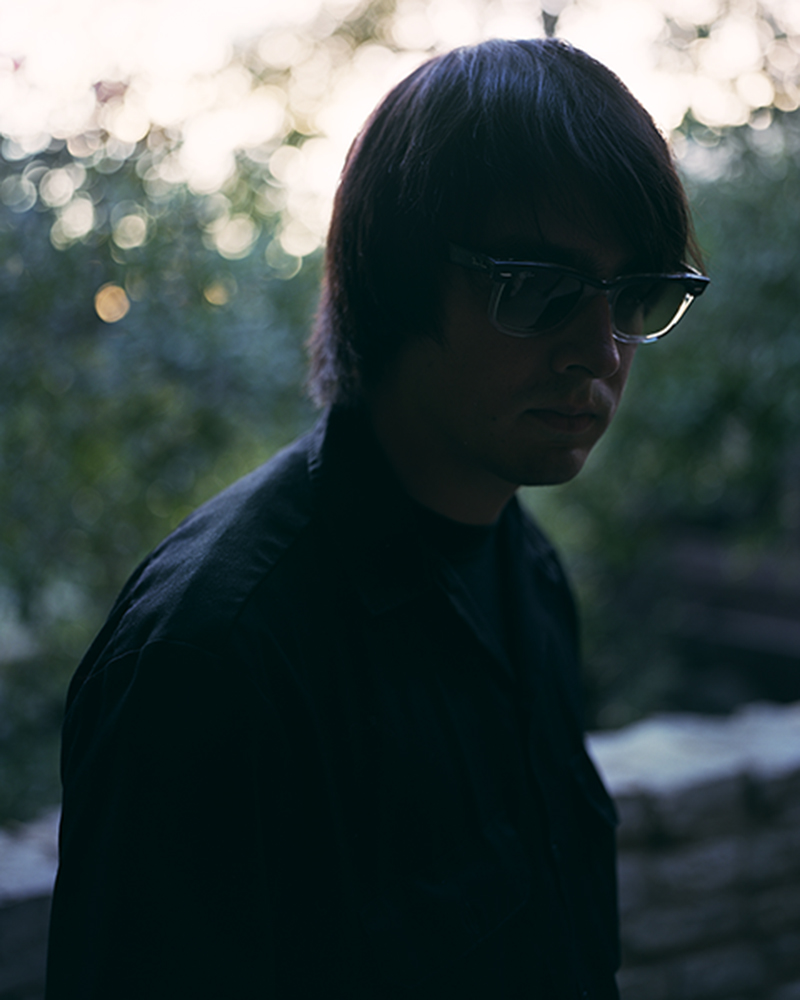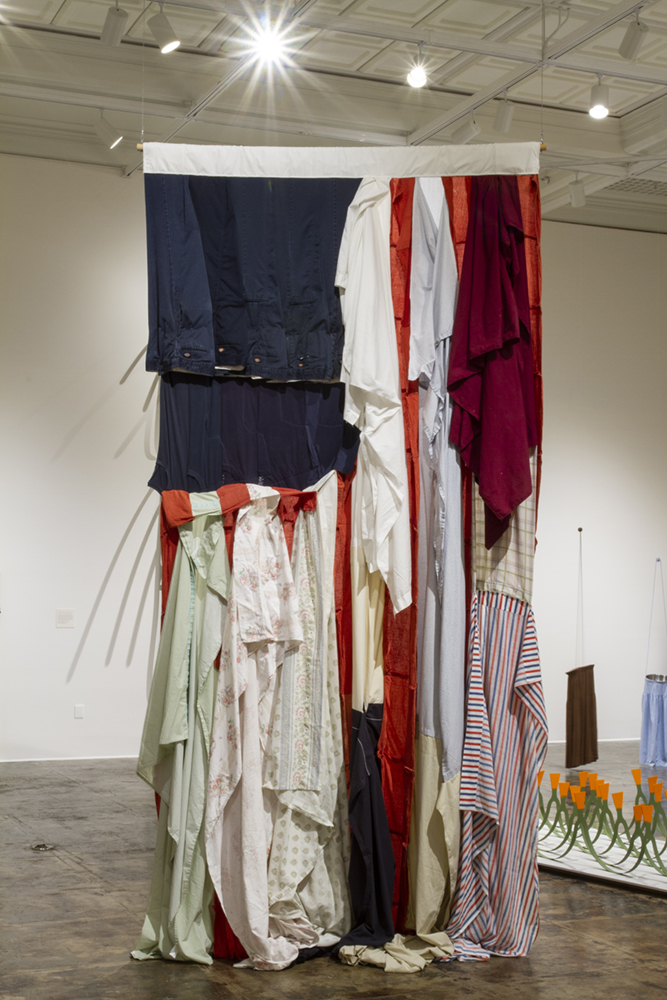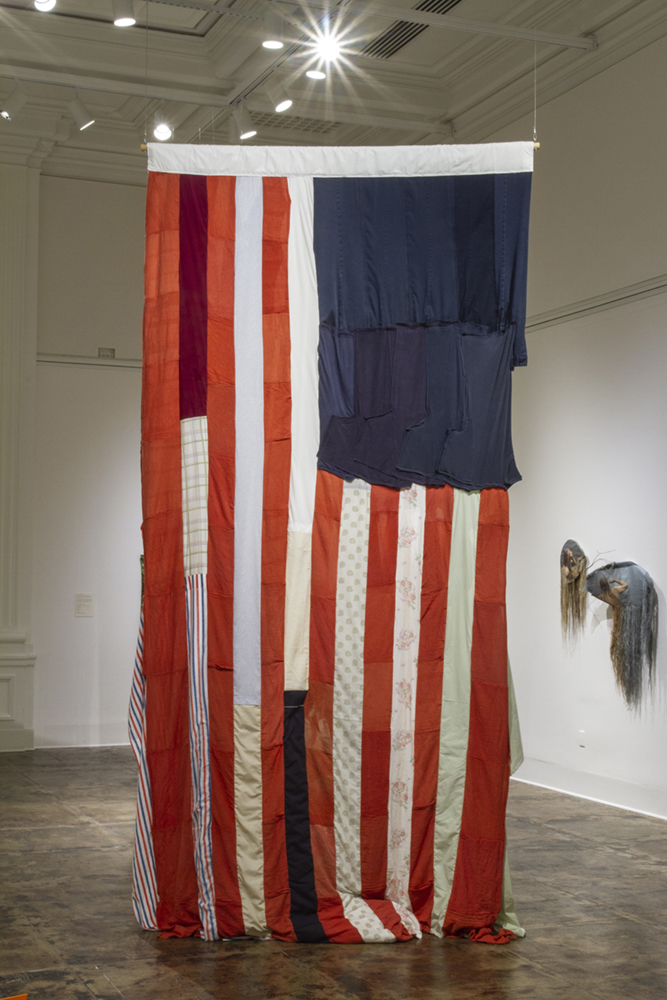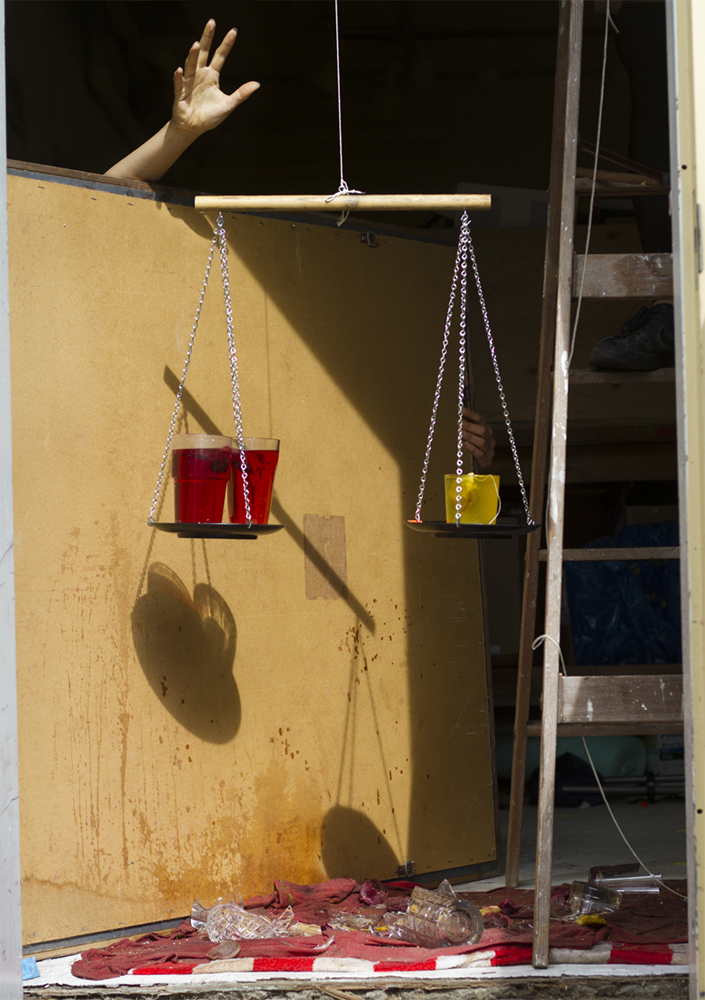Q&A: Victor YañEz-Lazcano
By Zora J Murff | Thursday, June 21st
Victor Yañez-Lazcano received a Bachelor of Fine Arts degree from Columbia College Chicago in 2008. While in Chicago he balanced a freelance career in both commercial and fine art photography. During this time, he has also established himself within the community as an arts educator primarily working in the south side neighborhood of Pilsen. His work has been exhibited at numerous spaces including Citlalin Gallery, Harrington College of Design, Columbia College Chicago’s A+D Gallery, and Riverside Arts Center, as well as Mind/Matter Gallery (Rochester), Aviary Gallery (Boston), and South Haven Center for the Arts (Michigan). Past residencies include the Industry of the Ordinary’s Summer School Residency, ACRE, and Ox-Bow. Victor just celebrated his graduation and received his MFA from Stanford University.
TBD, from the series de by Victor Yañez-Lazcano
Zora J Murff: Hi Victor! Thanks for agreeing to do this. Let's start by getting to know a little about you.
Victor Yañez-Lazcano: My name is Victor Yañez-Lazcano (pronounced Yahn-Yes Lahz-Cah-No). I’m the son of Mexican immigrants born and raised in the rural Midwest. (I’m writing to you from the laundromat post MFA-everything except walking on stage for that piece of paper).
I’m currently a 2nd year MFA Art Practice candidate at Stanford University. I left Chicago—where I got a degree in Photography from Columbia College. Between BFA and MFA I worked as a photography instructor for the MoCP’s After school Matters program, as well as through Columbia College’s Project AIM—an art integration and mentorship program through Chicago public schools. While teaching for 8 years I also kept up a freelance hustle—mainly photo assisting and art handling. On the side I helped to start a non-profit digital facility, LATITUDE, with a group of amazing artists (Walker Blackwell, Matt Austin, Eillenn Mueller, Maria Hummel, Jennifer Keats, Kate Aimée Beaubien, and a subsequent cast of super dedicated artists who have since nurtured Latitude into the beautiful place that it is today.)
Last, if you’ve seen my Instagram account you’ll notice my obsession with music.
ZJM: I’d like to first touch on your series De because that was my first introduction to you and your work. I saw it at Alibi Fine Art in 2016. Can you tell me about the series?
VYL: Yeah. De is an ongoing body of work that seeks to create a poetic record of everyone in my entire family. It initially started as a “project” to keep my photo-muscles from atrophying. However, it didn’t take long to understand the magnitude of what I was engaging with.
ZJM: How did De serve as a precursor to your current work?
VYL: Woof. De was without a doubt that thing that was right under my nose the entire time I studied photography in Chicago. For some reason I always felt like when my camera came out around my family I wasn’t able to be fully present, so I tried my best to keep it away. But eventually it just made sense to fight through that feeling and make it all work out (for my family especially). It wasn’t until just before graduate school that I understood that a lot of the work I had exposed myself to and engaged with had been dominated by the white male gaze. As such I had a super crucial moment when I realized that I had been conditioned to look at my subjects—my family—through the lens of the white male. This coupled with the understanding that in most cases my work was going to be viewed by a predominantly white audience. These were both quite painful realizations. Somewhere in the mix during all of that I was inspired by local artists that spoke a different material language—There was this crew of artists—before cake, after dinner (Jesus Mejia, Karen Bovenich, Michelle Ishikawa, EJ Hill, and Austin Knerim) that I started hanging out with who really pushed me to think beyond the camera. In turn making me realize that sticking to one medium was suffocating my ideas. After them there was no turning back….
ZJM: In your work, you use photography, sculpture, performance, and installation. During my time as a graduate student, I had a desire to break from using just photography to express my ideas. I felt that the photograph often wasn’t enough. What interested you in using other media? How do you feel it informs and/or enhances your practice?
VYL: When thinking about my practice I have often stated that I wouldn’t try to build a house with just a hammer. As such, I don’t think, given the breadth of my interests, that I could mold a career through just one medium. That is not to say that I disagree with that route. I just find it more liberating for me. I also just spend a lot of time talking through ideas, thinking through ideas, daydreaming about ideas until those same ideas find a comfortable place to land within a particular medium. My process has slowed down significantly—which from time to time makes me feel like I don’t produce enough. But when that ish finally comes out I feel pretty great about my pace.
Untitled (Calendars 1982-1986), Poder (ñ)–Spanish, and Poder (n)–English by Victor Yañez-Lazcano
ZJM: Your mention, “how [your] own perception of identity formation has often resulted in the internalization of systems of oppression” immediately makes me think of W.E.B. DuBois’ “double consciousness”. Are you familiar with that concept? I think your works Poder (n)—English and Poder (ñ)—Spanish. Highlight this idea pretty well with wordplay and the politicization of language. Can you expound on this more?
VYL: That’s great that you bring that up. I am loosely familiar with this concept as it probably does to a certain degree further support what I have been thinking about in my practice. And I’m pretty sure this notion came up in one of my electives last year. However, I believe the peoples who have most significantly provided me with a sort of language of liberation have been the queer & feminists of color thinkers I was exposed to in the last 21 months. The most recent essay I have sourced as influential was Adrian Piper’s passing for white, passing for black. Super dope writing.
As for poder… this piece came after another I made last year that I am still 100 percent behind, but seems to have missed the mark for others called untitled (calendars 1982-1986). In the latter, I was trying to imagine what is must had been like for my parents to learn the English language in relation to the word “January” in which the sound created by the “nu” in the month resonate with the sound the “ñ” makes. For this piece I simply marked the calendars with a tilde above the n, again imaging this as a thing my parents might have done to transition to learning English. The number of calendars is significant insofar as they gesture at how upon entering the institution of the public school my name went from being pronounced Yahn-Yes to Yuh-nez per the removal of the tilde in both documents and certain individuals resistance to pronounce it properly. My classmate Natani, a badass Native American artist, shared her story of how a teacher insisted that her name was actually Natalie.
At the same time that Spanish plays a central ideological role in constructing Latina/o ethnolinguistic identities, English language hegemony in the U.S. relies heavily upon schools as flagship institutions for language standardization. This positions English both as a public educational norm and as the surest linguistic vehicle for the acquisition of administratively valued cultural capital (Rosa, 2014, p. 50).
Later, after a few readings from this dope linguistics class I took with Jonathan Rosa, I decided to take up that language of commerce—via the neon sign—in an attempt to further gesture at 1) the persistence of culture and identity in language use 2) the shifting US values in relation to the use of the Spanish language and how it has been commodified 3) the power (poder) that one simple mark has in shaping the perception of one’s identity. The tilde in this case possessing that power.
ZJM: That tilde is a very poignant punctum. Your answer brings me back to your comment about initially seeing your family from the "white male gaze". In untitled (calendars 1982-1986), you imagine an experience had by your parents and that parallels a very real experience had by you (and similar to one I've had as well). Have your parents seen your work? I'm curious to hear how they respond to it.
VYL: My folks have only seen most of the photographic works. I'm comfortable saying that it took a little bit of work to get everyone on board (though their excitement and curiosity were almost always present). As for the new works, I don't think they've seen anything other than pics I text them. However, for untitled (calendars 1982-1986)...
I just remember the idea hitting me during a holiday visit with my family. My parents and I were having breakfast and I was super messed up on coffee. While sitting at the kitchen table, I purchased something like 18 overpriced calendars from anywhere I could find them online. I don't remember much beyond my mom saying something like, "aaaay hijo" with heavy concern for what I was doing with my money. In any case, my folks along with about 27 other family members are about to visit for graduation. They've never been to the bay. I'm excited to show my folks what redwoods are. Which leads me to a thought that I keep coming back to because of your question...It's a though that's been kicking around since my first trip to Europe–something like...Within the realm of possibilities.
Part of why I mentioned that it was "work" to get everyone on board was because this art world ish wasn't totally within the realm of possibilities. That is not to say that my family was unfamiliar with what art was/is. But to make a life out of it was definitely outside of their lived experience. In turn, placing it just outside of what is possible. I'm sure this is wrapped up in some sort of mentality specific to their experience as immigrants along with how much concern I've caused them as a result of the debt incurred from my undergraduate degree–I'll leave that topic out as I could go on about how F'd up that situation is.
Anyway, late last summer I used some award money I received from The Murphy & Cadogan Contemporary Art Awards Exhibition to travel to Europe for the first time to see art and gain perspective. I had made it my goal to go see a piece by my dear friend EJ Hill who had been a part of the Venice Biennale. While in Paris I found out that particular piece, Pillar, had been taken down, but that another piece was up at the Biennale de Lyon. So, I met up with him there. This is when this idea of Within the realm of possibilities came to mind.
Being in Europe and walking alongside EJ generated an unfamiliar feeling of what is possible. I mean specifically as it pertains to what it means for one to have proper models. And furthermore, how significant it was for me to see another POC, especially one who I know personally, take up space in this way and shine brilliantly. Sure, we can have dreams and aspire to do great things, but when one has accessible models I feel that it increases the probability of one believing in what way they think is possible–therefore increasing the possibility that one might make a move in the direction of uncertainty tackling fears head on and further contributing to what lies Within the realm of possibilities. I often think of how different my path would have been with access to such models prior to art school. I expressed to him as we walked how important experiencing that feeling was to me at that very moment. And that he made my own goals something more real and had further positioned them Within the realm of possibilities.
Then when I got to the Venice Biennale I saw Mark Bradford's piece at the US Pavilion and was like "okay. Yep. This is possible." And then when I got to the Turbine Hall at Tate Modern, I saw what remains of Doris Salcedo's Shibboleth and said, "I'm coming back." But maybe the most surprising of all encounters was stumbling into Soul of a Nation: Art in the Age of Black Power and seeing Dawoud Bey's work. I was not aware of the exhibition of that I would encounter Dawoud's work there. when I rounded the corner to see what was on the wall I lost my ish. I even turned around and smiled at those in the space and almost said..."wait! Do y'all see what I see?! It's Dawoud!" I refrained, of course, but maintained my excitement. And thought "okay, one day. I can do this too." Dawoud's work further contributed to this new idea of what was Within the realm of possibilities. I hope that my work helps to encourage my folks, other family members, and friends to really consider what is possible. This shit is hard, but totally worth it. Woof, what a long answer.
ZJM: Let's switch gears a bit and talk about a couple of your performance pieces, specifically Lenguaje and Noviembre. I think I find those intriguing not only because of how long their durations are, but also because they seem to address an idea of being present. Is that something that you were going for? How do you feel that overlaps with some of the other issues you address with you work?
VYL: Totally. This is something I failed to mention in a previous question. Part of my interested in doing performance work lies within this idea of being present. Performance has allowed for me to experience what I imagine my materials experiences as a piece takes shape. My body gets to feel the material changes that occur over time. In turn, these feelings help to direct pieces. It's been an amazing way to generate ideas and new works. But as for "presence" I think perhaps I need to integrate this word and idea further into how I talk and write about my work, because it is definitely something I try to practice in my day-to-day–with myself and in the company of others. To practice what it means to be present is fruitful in so many ways. I'm certainly only at a novice level.
Lenguaje by Victor Yañez-Lazcano
As for how those pieces fit within my overall practice...In all honestly at first I didn't know exactly how. Part of being deeply immersed and invested in this MFA experience often found me hitting a creative wall. And that's a good thing. I learned quickly to welcome that feeling. I was able to identify it as fertile territory that I all too often confused for a rut–rightfully so. I decided that I wouldn't allow myself to fail while here. So, I welcomed fears and insecurities and walk them calmly out of my studio through my practice. During these times I felt like "Gah! I'm out of ideas. Well fuck it. I'm just going to try this. Here goes nothing." Many times, it wasn't pretty. But these worked out. Lenguaje, came during my first quarter and was in direct response to all of this research I was doing for this raciolinguistics class–by far the densest course I've ever taken. Because the content was relevant I decided that if most of my time was going to be spent reading and re-reading that it was best to just make a piece out of that. So, whenever I found myself reading I would grab some cassettes, a tape deck and record. Ten weeks later I stopped.
Noviembre by Victor Yañez-Lazcano
While I really dig the ephemerality and gifts offered up by live performances I find it equally as rewarding to invite viewers to activate their imagination in thinking about what the performance might have looked like. As such my desire to measure a particular moment in time coupled with a desire to create an arbitrary data set of who I might be influenced Noviembre. This piece, however, took several years to execute. I knew I had always wanted to do something with how numbers factor into shaping one's identity–like when you go to the meat market you pull a paper ticket and that's who you are for a brief moment in time. Later, when I started noticing that my presence was being accounted for in museums and galleries, I started to think more deeply about what that actually meant. I was being valued, but just as a number. Furthermore, I began to think about how often those individuals who were counting me were actually predominantly POC. My next thought led me to think about how messed up it was for these particular individuals to hold this position.–they are asked to maintain an authoritative presence while simultaneously being asked to be invisible. Sort of like how pedestals serve sculptures. I'm still thinking about this and how to more eloquently address this. But anyway, every time they counted me I would ask if I could make a photo of that number as a representation of who I was at that moment. This eventually led to my desire to do this on my own. Thus Noviembre. While for now these two pieces don't seamlessly fit within my interests in unpacking ideas that deal with identity, surely, they'll find their rightful place.
ZJM: What's next for you, Victor?
VYL: Momentum. I'm leaving graduate school feeling proud. Feeling like I survived. Feeling like I thrived. In many ways it was one of the toughest experiences–fruitful no doubt. This place wasn't designed with people like us in mind, but we certainly deserve to be here. I'm excited to hand my folks that piece of paper that confirms that I graduated from Stanford on the 17th.
Shortly after that transaction, I'll be headed to Mexico City for a residency at SOMA. While there some work will be in a pop-up show curated by this cat Calum Craik I met during a studio exchange. Cool dude. He's got some drive. Then when I get back, I'll hit the ground running in my new studio–my first ever outside of an institution–where I'll have to quickly prepare for a solo exhibition at Royal Nonesuch in Oakland–on view September 8th through October 15th. I'm excited to meet the east bay community of artists. I'm totally looking forward to my continued collaborative work with Livien Yin. She's officially a second year grad student here at Stanford and has opened up my practice in wonderful ways. Especially in terms of with it means to collaborate. We've performed a few times and recently made our first set of photographs. She's a dope artists. Last I'm excited to announce that I've been invited to teach photography for the next academic year here at Stanford. While teaching I'll keep up my art practice, continue my research, and see where I can take my love for music. Needless to say, I'm pretty pumped for what lies ahead.
ZJM: Thank you so much for your time, Victor. It's been great getting to know you a bit better.
VYL: Thank you dearly for this opportunity. I hope that my exposure also leads folks in the direction of some of the names I've mentioned. I didn't get here alone, and I'm happy to bring others along. We grow better together. I also look forward to chatting with you in person someday.
Images from the series De by Victor Yañez-Lazcano
Practicing Patience (Mojado) by Victor Yañez-Lazcano
Yu by Victor Yañez-Lazcano
30x40 inches
Archival Pigment Print
Document of running in place for 3 hours and 48 minutes
Mother tongue by Victor Yañez-Lazcano
Immigrant (a kind of blue) by Victor Yañez-Lazcano
Untitled (palas) by Victor Yañez-Lazcano
Practicing Patience (barrer)
Durational Performance
Asymptome: cups by Victor Yañez-Lazcano and Livien Yin
All images © Victor Yañez-Lazcano




